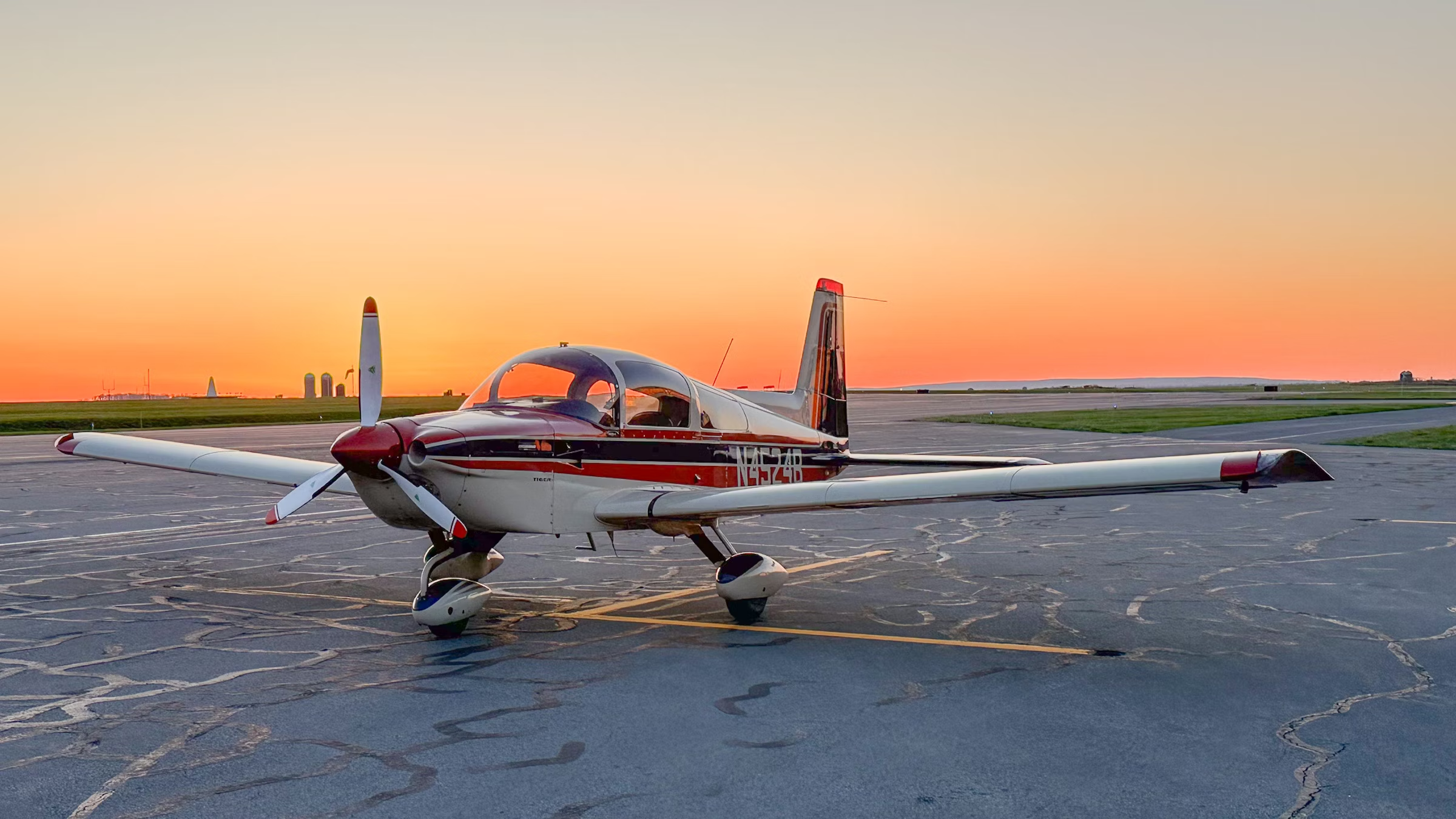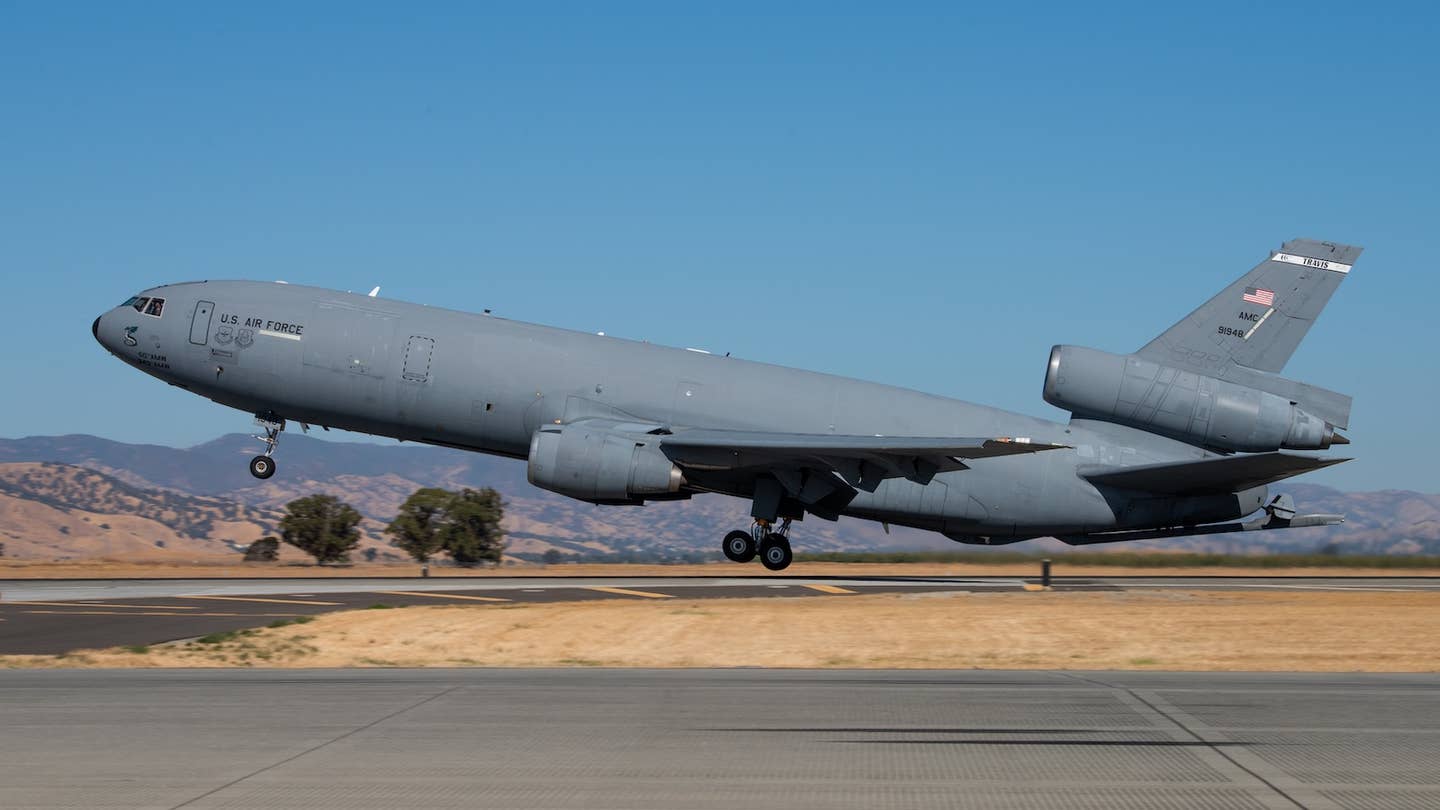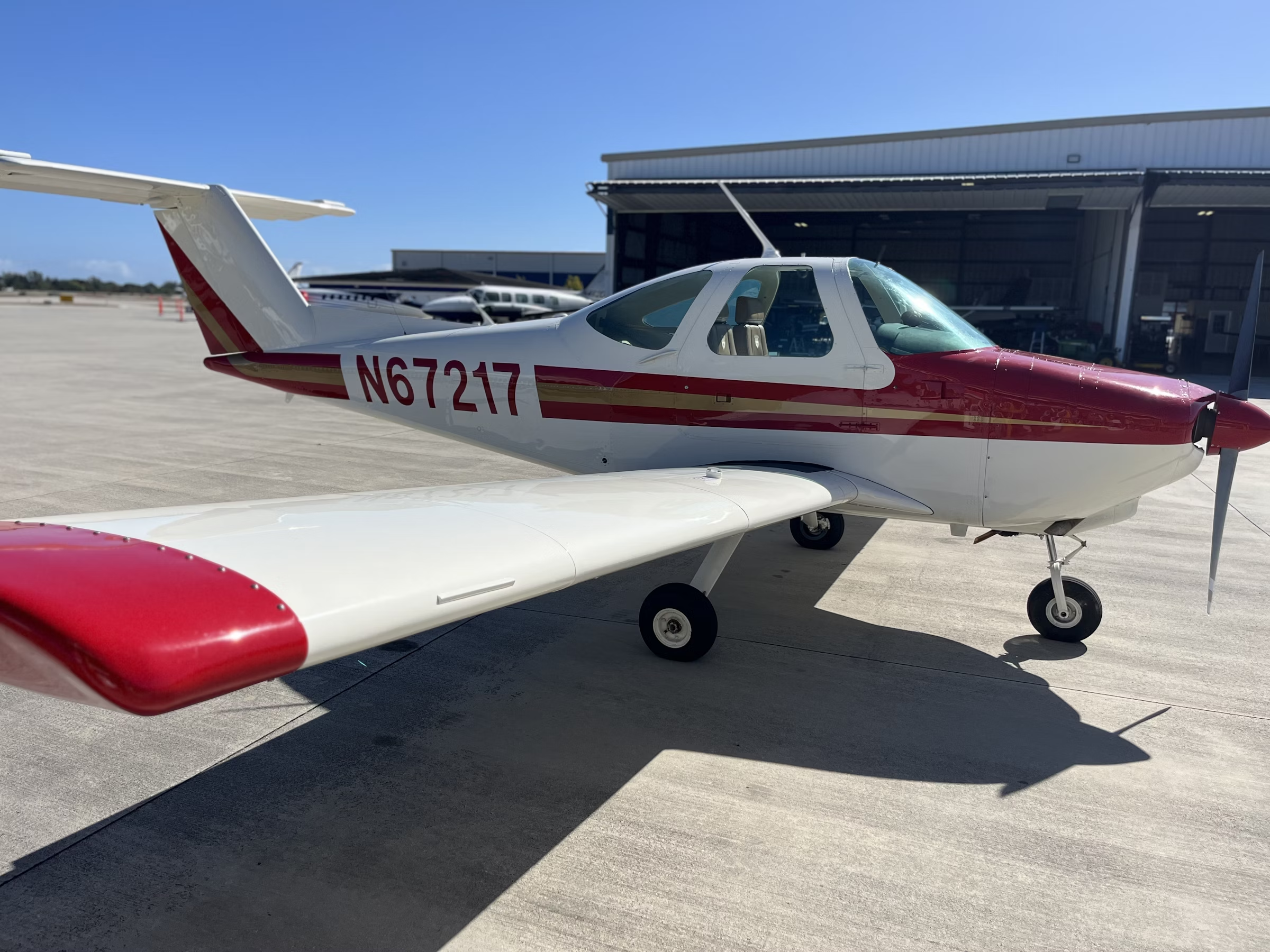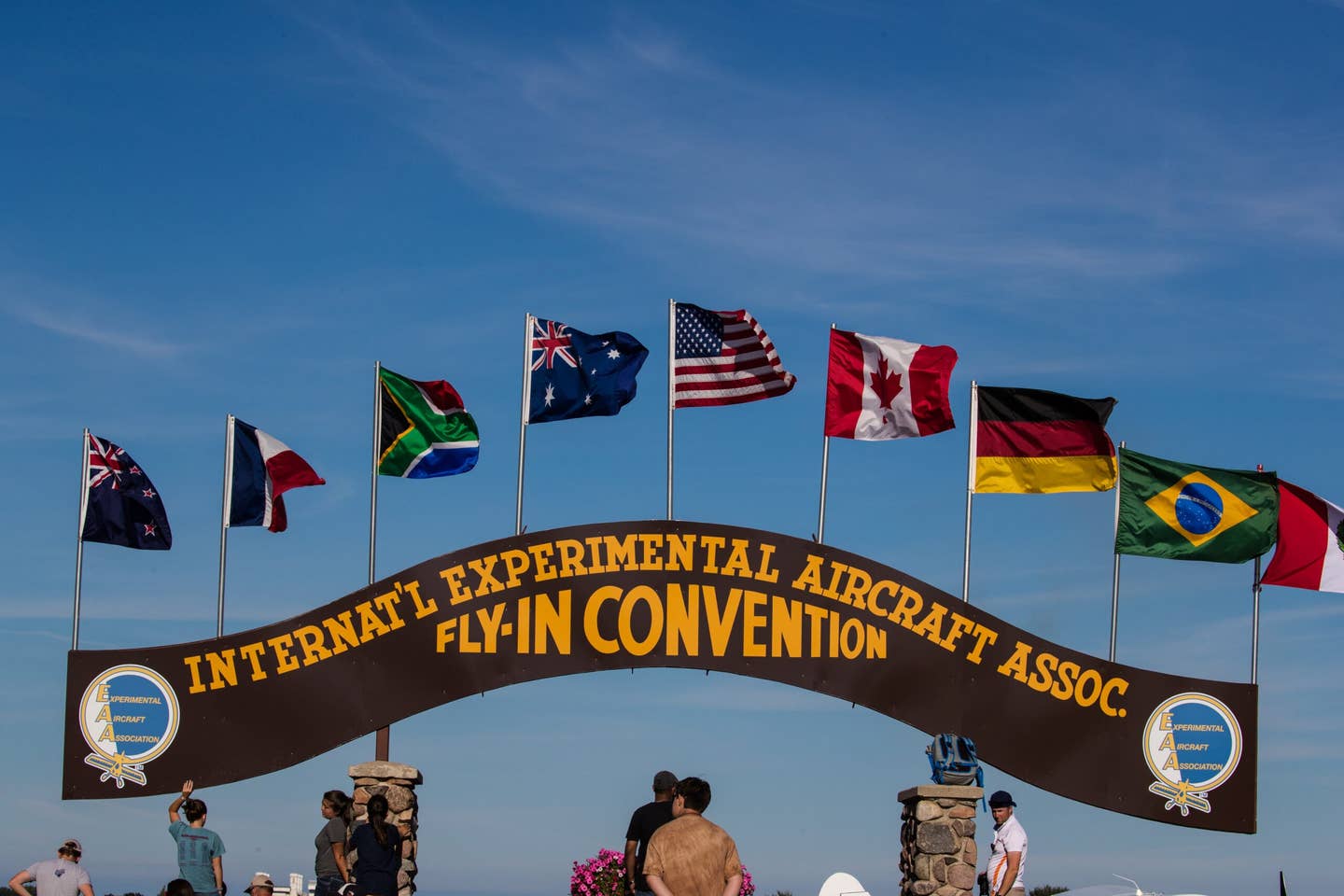Ultimate Issue: We Fly the Cessna T182T Skylane
Everything old is new again with this piston single.
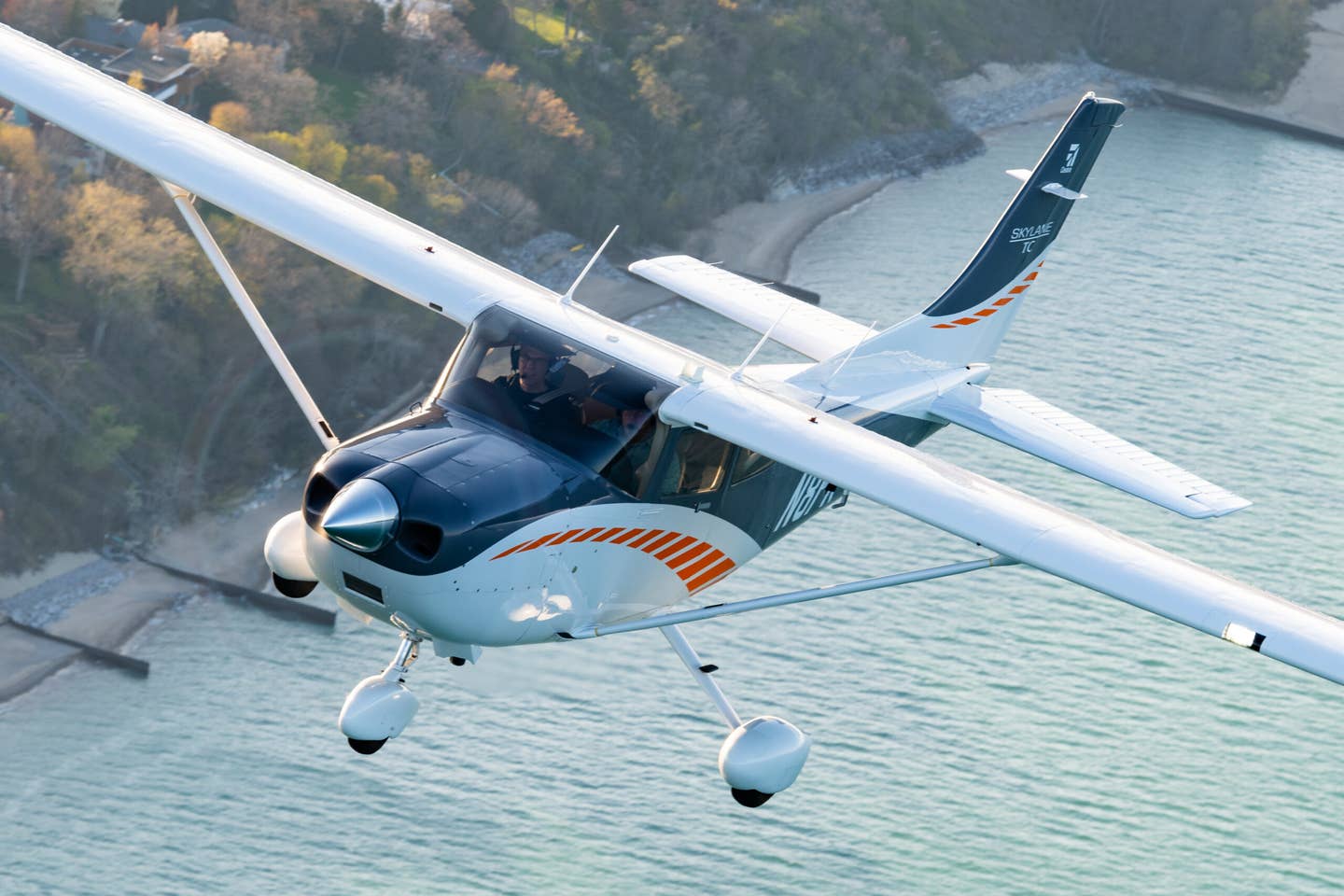
At sea level, the Cessna T182T Skylane will take off or land over a 50-foot obstacle in less than 1,500 feet. [Leonardo Correa Luna]
There’s no truth whatsoever to the assertion that the Cessna 182 has been around so long that the first model was open cockpit. The reality is that with its model 310 twin selling like crazy, Cessna realized that nosewheels meant good ground handling, fewer ground loops, and happy customers.
For the 1956 model year, the company applied the nosewheel concept to its tailwheel 180 and smaller sibling 170, creating the 182 and 172. Thus began a sales tour de force that continues to this day. Where the 172 became the most popular general aviation airplane in history, the more powerful and capable 182 became the big-engine, reliable, go-almost-anywhere, powerful climbing, carry-almost-anything, good-handling, comfortable old boot that could be found nearly anywhere on the planet where there was space into which to shoehorn an airplane.
In the first decade of manufacture, Cessna fine-tuned the 182 with a wider and deeper fuselage that made the cabin truly comfortable for four, added a panoramic rear window, as well as beginning steady gross weight increases so that what was soon named the Skylane became the utility infielder of the GA world.
- READ MORE: We Fly: Embraer Phenom 300E
The original design was eventually stretched to become the models 205, 206, 207, and, with retractable landing gear, the 210 and retractable 182.
In 1962, Cessna became the first to successfully bring a form of turbocharging to general aviation with its model 320 twin. A turbocharger is an air compressor that pumps more air into an engine, allowing it to develop greater power at higher altitudes than a normally aspirated engine as intake pressure drops with altitude. A turbocharger uses exhaust gas to turn a turbine, to compress and boost intake pressure. When there’s more air entering the engine, more fuel can be added to the fuel/air mixture resulting in greater power.
Turbochargers have been around since World War I, but their complexities and fiery operating environment prevented their widespread use in GA until the Cessna 320 debuted with a system that was reliable and didn’t require a degree in engineering for pilots to operate safely. The 320 sold like mad, so Cessna expanded its turbo offerings.
For the 1981 model year, Cessna turbocharged the Skylane, but with a relatively primitive, fixed-wastegate system that involved significant pilot workload. Nevertheless, it proved popular, outselling the normally aspirated 182 until Cessna’s hiatus on piston-engine production in 1986.
When that production began once more in 1996, the 182 was reintroduced in its normally aspirated form. In 2001, to start out the new century, a new turbocharged 182—the T182—was offered with important updates, including aggressive corrosion-proofing and aerodynamic tweaks to the airframe. Motive force now came from a Lycoming engine with slightly more power, the 235 hp TIO-540-AK1A with 2,000-hour TBO. Most significantly, the turbocharging system was a sophisticated set-and-forget type.
A sloped controller in the system sensed manifold pressure and modulated the wastegate to keep the correct amount of exhaust gas going through the turbine section of the turbocharger to maintain the desired manifold pressure. The wastegate is a valve that adjusts to direct exhaust gas through the turbine section of the turbo until the system decides the amount is appropriate, and then it directs any excess into the overboard exhaust pipe.
There was one more pause in Turbo Skylane production—in 2013—when Cessna explored replacing it with a diesel version. I’ve heard various reasons that the diesel didn’t work out but don’t know if any are true. Cessna, wisely, in my opinion, reintroduced the T182T with deliveries starting in 2023. The newest version included the latest Garmin G1000 NXi avionics suite, a heated prop, and upgraded interior amenities. Max operating altitude is 20,000 feet. Base price is currently $760,000.
As an aside, the first “T” in T182T refers to the Cessna’s way of saying that the flying machine is turbocharged. The second letter designates the specific model (as type certificated) of 182. The first model 182 had no alphabetical suffix—it is called the “no letter.” Each subsequent model change received a new letter, although some letters were skipped. The current normally aspirated 182 is the 182T.
The Basics
The T182T I flew was the first off of the assembly line in the 2023 production restart. It was flown as a demonstrator for 240 hours before being purchased by Phil Preston of Poplar Grove, Illinois. The airplane came with most available options including electric air conditioning, oxygen, and a striking interior.
The T182T’s Lycoming engine is a “max continuous power” engine—it develops its full-rated 235 hp continuously at 32 inches of manifold pressure, 24 gallons per hour (gph) fuel flow, and a quiet 2400 rpm all the way to 20,000 feet. There is no time limit on full-power operation.
- READ MORE: We Fly: Cirrus SR G7
Empty weight of the airplane I flew is 2,191.5 pounds. With a maximum ramp weight of 3,112 pounds (max takeoff weight is 3,100 pounds), it has a useful load of 920.5 pounds. (Cessna’s advertising claims a 998-pound useful load.) Max landing weight is 2,950 pounds, so 192 pounds of fuel (27 gallons) must be burned off following a max-weight departure. Fuel capacity is 92 gallons in the integral wing tanks, of which 87 is usable.
With full fuel—522 pounds—398.5 pounds can be loaded into the cabin. At first blush that doesn’t seem like much for a legendary load hauler like the 182, but the huge fuel tanks make the airplane a camel. At 15 gph, full tanks give well over five hours endurance.
Still, with all the options, this airplane is heavy. Putting four 200-pounders in the cabin means the airplane is over its maximum landing weight without any fuel aboard, so juggling fuel and passengers is required. Assuming having 10 gallons of fuel on board when landing at maximum landing weight after burning off 27 gallons following a gross weight takeoff, the maximum possible cabin load for the airplane we flew is 698.5 pounds, or three large adults and baggage. Maximum baggage is 200 pounds—split between three baggage areas.
Cessna singles have a reputation for some of the longest center-of-gravity (CG) ranges in the industry. The T182T lives up to its reputation. I ran several weight-and-balance scenarios and found that in none of the occupant and baggage combinations I tried was the airplane out of the forward or aft CG limit. That’s impressive.
The fuel system is simple. Two tanks and a fuel selector that offers left, right, and both and off positions. Leaving it on the “both” position means getting all the available fuel and minimizes the risk of selecting a tank that doesn’t have fuel in it. To avoid inadvertently shutting off the fuel, the selector valve must be pushed down before it can be rotated to the “off” position. I was impressed by the accuracy of the fuel gauging system, something important when launching with partial fuel may be routine.
The electrical system is straightforward—dual bus, 28-volt DC, powered by a 95-amp alternator with primary and standby batteries. The standby battery will power the equipment on the essential bus for about 45 minutes.
Walking around this new T182T revealed excellent fit and finish, a beautifully applied paint job and some of the aerodynamic touches made over recent years to maximize speed, such as smaller steps, low-drag wheel fairings, and a low-profile beacon.
The Cabin
Opening one of the large cabin doors, you notice little touches, such as their solid feel and the easy step into the cabin itself. Preston has owned several airplanes, high-wing, low-wing, and biplane. He told us that he chose the 182 because of the ease of entry: “I don’t like climbing up onto a wing to get in and out of the airplane.” He also likes the high wing because he’s loaded and unloaded airplanes in the rain many times and prefers to be able to stay dry.
The seats are delightfully comfortable and adjust far more easily than older 182s to fit a wide variety of pilot sizes and shapes. Cessna has been a leader in GA crashworthiness going back to 1946 when it began offering shoulder harnesses as optional equipment for all seats in its singles, continuing through the 1960s when it did full-scale crash testing and later when it donated some 172s to NASA for its crash research. Where it shows in this new T182T is with the best occupant restraint systems available in general aviation—AmSafe airbag seat belts for all four seats.
- READ MORE: We Fly: Diamond DA62
The clean panel is dominated by the Garmin NXi two-screen display with all controls, switches, and knobs easily accessible to the left-seat pilot.
Flying It
Start-up is not simple. The process, including system checks, takes nearly a minute before the starter switch is engaged. On my flight the engine started easily on the first try, even though it was hot. Preston told me that he has not had any problem with hot starts.
Once the avionics were on, Preston showed how easy it was to load a route into the Garmin NXi system. He said that he appreciated its wireless database and flight plan loading capability.
Taxiing out, I was impressed at how easily the airplane rolled and the lightness of the nosewheel steering—there’s no sense of a heavy engine pressing down on it as there is in older Skylanes. On the hot morning of our flight, I came to quickly appreciate the electric air conditioning. It cooled the cabin rapidly.
I used Cessna’s recommended 10 degrees of flap for takeoff. Lined up, and throttle forward, I monitored the manifold pressure to make sure that it stopped at the 32-inch redline. While the turbocharger control is automatic, if the engine oil is cold, the control can be sluggish, and it’s possible to overboost the engine slightly. If 32 inches is reached before the throttle is fully open, just stop pushing it forward until the control system catches up. Acceleration is rapid, and right rudder is most definitely required, especially once the nosewheel leaves the ground.
The aggressive takeoff performance of the turbo Skylane reminded me that the T182T meets the U.S. Department of Defense’s definition of STOL aircraft right out of the factory—no mods required. At sea level, it will take off or land over a 50-foot obstacle in less than 1,500 feet. Few production airplanes are that capable. For a short field takeoff, 20 degrees of flaps are used.
Cleaned up and holding VY, 84 kias, loaded about 200 pounds below gross on a warmer than standard day, the rate of climb approached 1,000 feet per minute (fpm)—book is 1,015 fpm on a standard day. When I pulled the power back to what Cessna calls for in a “normal” climb—25 inches of manifold pressure and 16 gph fuel flow, while maintaining the full 2,400 rpm—the rate of climb sagged off by nearly half. At the suggested 95-knot airspeed, it was only 550 fpm.
Frankly, in my opinion, making a power reduction for climb in an airplane with a max continuous power engine makes no sense. It greatly increases the time to altitude and burns slightly more fuel—according to the POH—than a climb at full power. In addition, in case of an engine failure after takeoff, the higher it happens, the better the radius of action for a forced landing. Using full power and climbing at VY, the time to 20,000 feet per the POH is only 23 minutes from sea level and burns 9.2 gallons.
For a “normal” climb, it takes 24 minutes just to get to 12,000 feet and burns 6.3 gallons. Comparatively, at full power and VY, it takes 13 minutes and 5.1 gallons of fuel to get to 12,000 feet.
As with all but the oldest Skylanes, control forces on the Turbo Skylane are not light.
However, if sufficient pressure is applied to deflect them, the airplane is quite responsive with a most satisfying roll rate. Pitch forces are heavy, mostly due to the downspring in the elevator system that allows the long CG range. The first rule of thumb when flying a Skylane is to use the trim when any change is made in power or speed. With trim, the Skylane is a pure pussycat to fly—one of the reasons it has been so popular for so long. With trim, steep turns are a piece of cake. The solid stability of a Skylane in slow flight could set the standard for GA aircraft—the T182T proved no exception.
The Garmin Electronic Stability and Protection system kicked in while I was maneuvering (it can be disabled). It is a safeguard to protect the pilot while hand flying. Once the aircraft is rolled beyond a selected angle of bank or gets faster or slower than set speeds, it applies control forces to roll the airplane toward wings level or pitch up or down to control speed. Given that in-flight loss of control is well up there when it comes to risk of fatal accidents, I like this system a lot.
Stalls—hey, what do you want? It’s a Cessna. Power on, power off, full flaps, or clean, it’s a nuthin’ muffin. With the ball centered, it breaks straight ahead. A little pitch reduction, and it’s flying. Adding power (right rudder, remember!) turns any descent into a climb forthwith.
Preston and I then looked at cruise power versus airspeed. As much as I despise the overused phrase “power packed,” that describes this Lycoming engine. For pilots used to maximum cruise at 75 percent power, this engine gets one’s attention because it can be run, and leaned, at as much as 87 percent power—204 hp on a 235 hp engine. At 10,000 feet, the POH quotes a cruise speed on a standard day of 155 knots and 17.8 gph at 87 percent—that’s moving in a 182. At 20,000 feet on a standard day, 82 percent generates 165 knots while burning 16.3 gph.
Some time ago, I was told that Cessna does its cruise speed testing by launching above gross weight so that the airplane is at gross at altitude—and therefore the book speeds will be conservative. For over 40 years I’ve cross-checked book versus actual speeds on new Cessnas, and that’s always been the case.
Descending to 10,000 feet and setting up 75 percent power, at 15 degrees above standard temperature, the book called for 144 ktas. Preston and I saw 145, however, our fuel burn was 13.8 gph versus the book’s 13.6. Want to save some fuel but still move along nicely at 10,000 feet? Pull the power back to 60 percent and get a quiet decent 131 knots at 11 gph. Want to go far? According to Cessna, max range is 971 nm at best economy power.
Leaning leads to an issue that is troubling for an airplane of this sophistication and a useful load that is, let’s face it, not exactly great. Lycoming’s recommended lean mixture setting is 50 degrees rich of peak turbine inlet temperature (TIT). (Lycoming certificated the engine, so Cessna must follow Lycoming protocols.) With what we know now from published data from sophisticated general aviation engine test facilities, 50 degrees rich of peak is not at all good for an engine.
It is the power setting for the highest combination of heat, internal cylinder pressure, and minimum detonation protection—and may necessitate cylinder replacement prior to engine overhaul. For best power, Lycoming calls for 125 degrees rich of peak TIT—which is better for detonation protection. Per the POH, best economy is at peak TIT. That setting is not wonderful because it is still in the range of maximum heat and internal cylinder pressure as well as lower detonation protection.
Lean of peak (LOP) operation is not “approved.” As far as I can tell, it’s not a limitation, so it is a recommendation. Still, it makes no sense to me. Lycoming engines have a reputation for excellent mixture distribution between cylinders and have been run LOP for decades. LOP reduces fuel burn 2 to 3 gallons per hour and dramatically reduces CHTs as well as internal cylinder pressures.
In an airplane that is heavy to start with, having to burn 2 or 3 gph more than necessary isn’t a stellar idea. It means having to carry extra fuel instead of payload. For a trip of several hundred miles, that can mean an extra hour of endurance wasted. To make a good airplane even more capable by reducing fuel consumption, extending engine life and increasing payload, one wonders why Cessna hasn’t leaned on Lycoming to come into this century with engine operating guidelines.
As we flew, I purely enjoyed working with the Garmin automation in the Turbo Skylane. Preston demonstrated that not only did the autopilot engage smoothly, programming it to do what we wanted was easy.
Millions of words have been written about Garmin automation, so I won’t add more here, other than to say it was intuitive, easy, worked well, and seamlessly integrated into the T182T.
Approaching our towered airport, I was asked to keep the speed up until short final. Those are magic words to a Skylane pilot. The T182T smoked down a long final at 150 kias until 3 miles out—then I took advantage of the high flap speeds. The first 10 degrees of flaps can come out at a blistering 140 kias, 20 degrees at 120 kias, and all of them at 100 kias. The airplane slowed so quickly that it was a piece of cake to be stabilized at 60 kias while still several hundred feet up.
I’ve heard pilots complain that 182s are nose heavy. They aren’t. The reality is that with just two aboard, the airplane is near the forward CG limit, so a lot of nose-up elevator is necessary to flare. Plus, if the airplane isn’t trimmed, it’s going to take a lot of effort to heave the yoke aft because of the downspring in the system and the airframe’s attempt to nose down to maintain its trim speed.
The POH says that the demonstrated crosswind level is 15 knots. With the effective flight controls of the T182T, I suspect that number is conservative.
Conclusion
The Cessna 182 became the four-place airplane everyone wanted because it does almost everything well—it’s the SUV of the general aviation world. With turbocharging the T182T takes that utility and performance to new heights and new capabilities, giving a pilot more options and more ability to deal with weather and winds.
Spec Sheet: Cessna T182T Skylane
2024 Base Price: $760,000
Engine: Lycoming TIO-540-AK1A
Propeller: (Manufacturer, metal or composite, number of blades) McCauley, metal, three blade
Horsepower: 235
Length: 29 feet
Height: 9 feet, 4 inches
Wingspan: 36 feet
Wing Area: 174 square feet
Wing Loading: 17.8 pounds per square feet @mtow
Power Loading: 13.19 pounds/hp
Cabin Width: 42 inches
Cabin Height: 49 inches
Max Takeoff Weight: 3,100 pounds
Max Zero Fuel Weight: N/A
Standard Empty Weight: 2,114 pounds
Max Baggage: 200 pounds
Useful load: 998 pounds, depending on options
Max usable fuel: 87 gallons
Service Ceiling: 20,000 feet
Max Rate of Climb, MTOW, ISA, SL: 1,040 fpm
Max Cruise Speed at 82% Power at 20,000 Feet: 165 ktas
Max Range: 971 nm [45-minute reserve]
Fuel Consumption at 82% Power: 16.3 gph
Takeoff Over 50 Ft. Obs: 1,385 feet [ISA, sea level]
Landing Over 50 Ft. Obs: 1,335 feet [ISA, sea level]
This feature first appeared in the Summer 2024 Ultimate Issue print edition.

Sign-up for newsletters & special offers!
Get the latest FLYING stories & special offers delivered directly to your inbox

